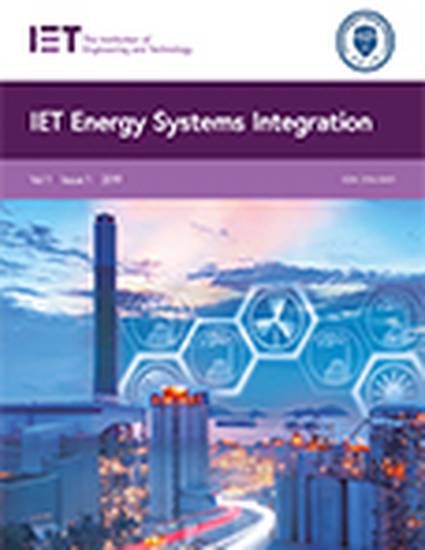
Article
Generation Expansion Planning under Correlated Uncertainty of Mass Penetration Renewable Energy Sources
IET Energy Systems Integration
(2020)
Abstract
This study presents a methodology for generation expansion planning (GEP) under the presence of uncertainty of multiple renewable energy sources (RES). Both long- and short-term uncertainties are represented and incorporated within the proposed GEP model. The long-term RES uncertainty is simulated by the annual variation of the capacity credit. The short-term uncertainty is modelled by means of the net power based on the hourly variation of RES output power and load curve. The proposed GEP model is solved through three steps. In the first step, the proposed robust GEP model is solved considering the long-term uncertainty of the multiple RES. Short-term uncertainty is considered when solving the GEP model in the second step. In the last step, the robustness of the obtained robust GEP model results is verified by checking the reliability criteria. A new correlated polyhedral uncertainty set is introduced considering the correlation between the different RES uncertain coefficients through its correlation matrix. Different GEP results are presented for different uncertainty scenarios. The results demonstrate that considering the correlation among uncertain coefficients provides insight for effects of correlation on investment strategies. Reserve margin is adapted to cope with uncertainty impact. Reliability criteria are verified by DIgSILENT generation adequacy tool.
Disciplines
Publication Date
September, 2020
DOI
10.1049/iet-esi.2020.0008
Publisher Statement
This is an open access article published by the IET and Tianjin University under the Creative Commons Attribution License (http://creativecommons.org/licenses/by/3.0/)
Citation Information
Omar H. Abdalla, Maged A. Abu Adma, and Abdelmonem S. Ahmed: “Generation Expansion Planning under Correlated Uncertainty of Mass Penetration Renewable Energy Sources”, IET Energy Systems Integration, Vol. 2, Issue 3, September 2020, pp. 273-281. DOI: 10.1049/iet-esi.2020.0008
